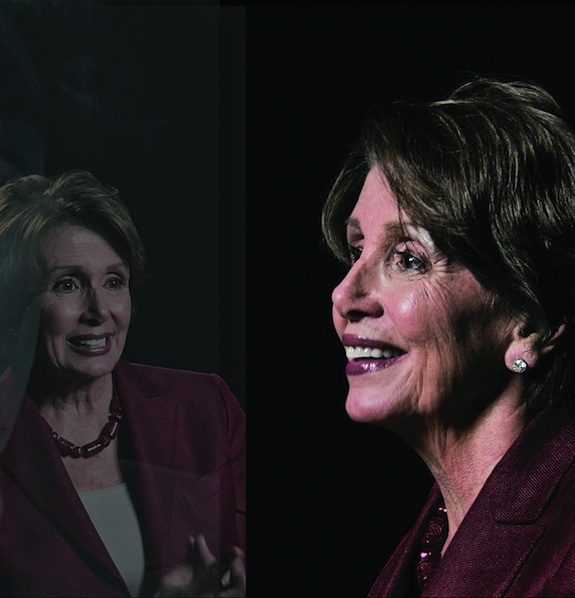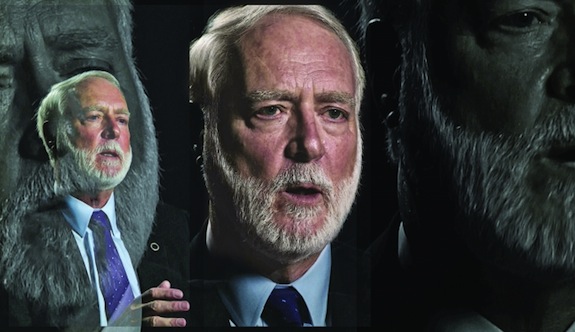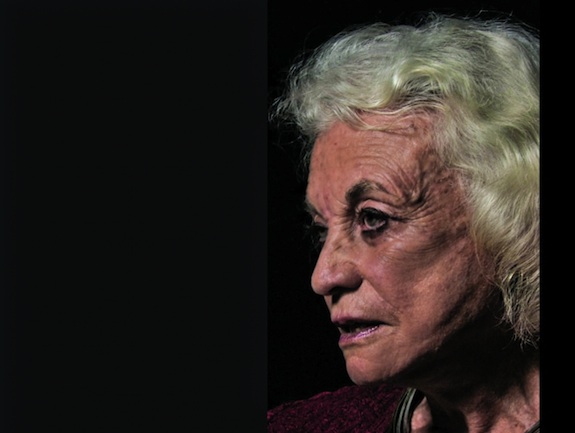Taking the Bite Out of DC’s Partisan Dialogue: A New Installation Seeks Common Ground
More than 89 heavyweights were interviewed for artist Lincoln Schatz’s new video work at the National Portrait Gallery
![]()
In Washington, D.C., it’s not uncommon for last names to be followed by a D, R or even an I, depending on party affiliation. In a town governed by blues and reds, that divisions run deep is often a predetermined conclusion. But Chicago-based artist Lincoln Schatz wanted to challenge that fiercely partisan dialog, asking the movers and shakers of the political scene to speak about their common and shared experiences from childhood dreams to where they were on 9/11. The result, The Network, is a video portrait of 89 different individuals, opening at the National Portrait Gallery Tuesday, December 11.
Before Schatz pioneered what he calls his “generative video” portraits, a technique that relies on an algorithm to recombine clips in an ever changing sequence, he was just another new, young face in D.C.
“I worked for Ted Kennedy opening his mail for several months. I was such a good mail opener,” says Schatz. Years later, after working with everyone from George Clooney to M.I.A., Schatz returned to the world of politics for a project inspired by Richard Avedon’s 1976 bicentennial election-cycle portrait of America, The Family. Seeking to capture the legacies, aspirations and challenges of everyone from Karl Rove to Cokie Roberts, Schatz says he parked his politics for the entire process.

Nancy Pelosi was one of the 89 sitters interviewed for roughly 45 minutes each by Lincoln Schatz’s for his generative video portrait. From The Network
“My fear was that I would come away from this project being politically agnostic,” says Schatz, who ended up with 9,000 video segments, each with tags like “family” and “freedom,” depending on what the sitter wanted to talk about. “It’s that traditional fear that you go to the sausage factory and you swear off sausage.”
But after spending time with people like civil rights activist and lawyer Vernon Jordan and president of the National Rifle Associate, David Keene, he says that wasn’t the case. “If anything, the complete inverse happened,” he says, adding, “Meeting so many people, who were deeply interested, who really deeply thought about and were engaged in their policy and politics, gave me complete faith in our democracy as a functioning model.”
Largely letting his sitters lead the interview, he also wanted to let them lead him to the next sitter, asking each to recommend someone new. In that way, he developed a network of people from the inside out, working through D.C.’s existing social infrastructure. Despite the variety of subjects, from former Supreme Court Justice Sandra Day O’Connor, Secretary of Homeland Security Janet Napolitano and founder of PubMed Dr. David Lipman to Under Secretary of Defense for Intelligence Michael G. Vickers and Representative Eric Cantor common themes naturally emerged.

Even the Smithsonian’s own Secretary G. Wayne Clough participated for the National Portrait Gallery’s new piece and talked about the work the Smithsonian has yet to do to be more inclusive. From The Network.

Sandra Day O’Connor served nearly 25 years on the Supreme Court and discussed how the Court decides which cases to hear. From The Network
“Many sitters were discussing the same topic, but when we started to recombine them sequentially in different combinations, it changed the way we understood that topic,” says Schatz. ”So many things are an abstraction and politics is one of them, we often lose sight of the fact that these are individuals.”
At the video’s installation Tuesday morning, viewers gathered around the monitor to see which interviewee would be selected first by the programming Schatz designed especially for this work. A thoughtful Barney Frank, the retiring member of the House of Representatives from Massachusetts, appeared on the screen, talking about his upbringing in Bayonne, New Jersey where the politics were notoriously corrupt.
The work aims to unite figures across the red-blue spectrum, including people like Frank, known for his outspoken liberal politics and Grover Norquist, the hardline small government advocate and founder and president of Americans for Tax Reform.
And though the work does reveal a human side to politics, there are plenty of reminders that politics is, after all, politics.
Norquist says he enjoyed learning more about where his onetime congressman came from, but the bipartisan warmth didn’t last long. Reflecting on the clip, Norquist says, “I thought to myself how glad I am he’s not in Congress anymore, what a nice man to be somewhere else.”
The accompanying book, The Network: Portrait Conversations will also be released Dec. 11. with text from the 89 interviews and photographs from the video. Lincoln Schatz will be at the National Portrait Gallery for a discussion and book signing, December 11 at 6 P.M.
/https://tf-cmsv2-smithsonianmag-media.s3.amazonaws.com/accounts/headshot/Leah-Binkovitz-240.jpg)
/https://tf-cmsv2-smithsonianmag-media.s3.amazonaws.com/accounts/headshot/Leah-Binkovitz-240.jpg)